Leonard Woolf memorial brick embedded in commemorative flight of steps erected by Frome’s Missing Link:
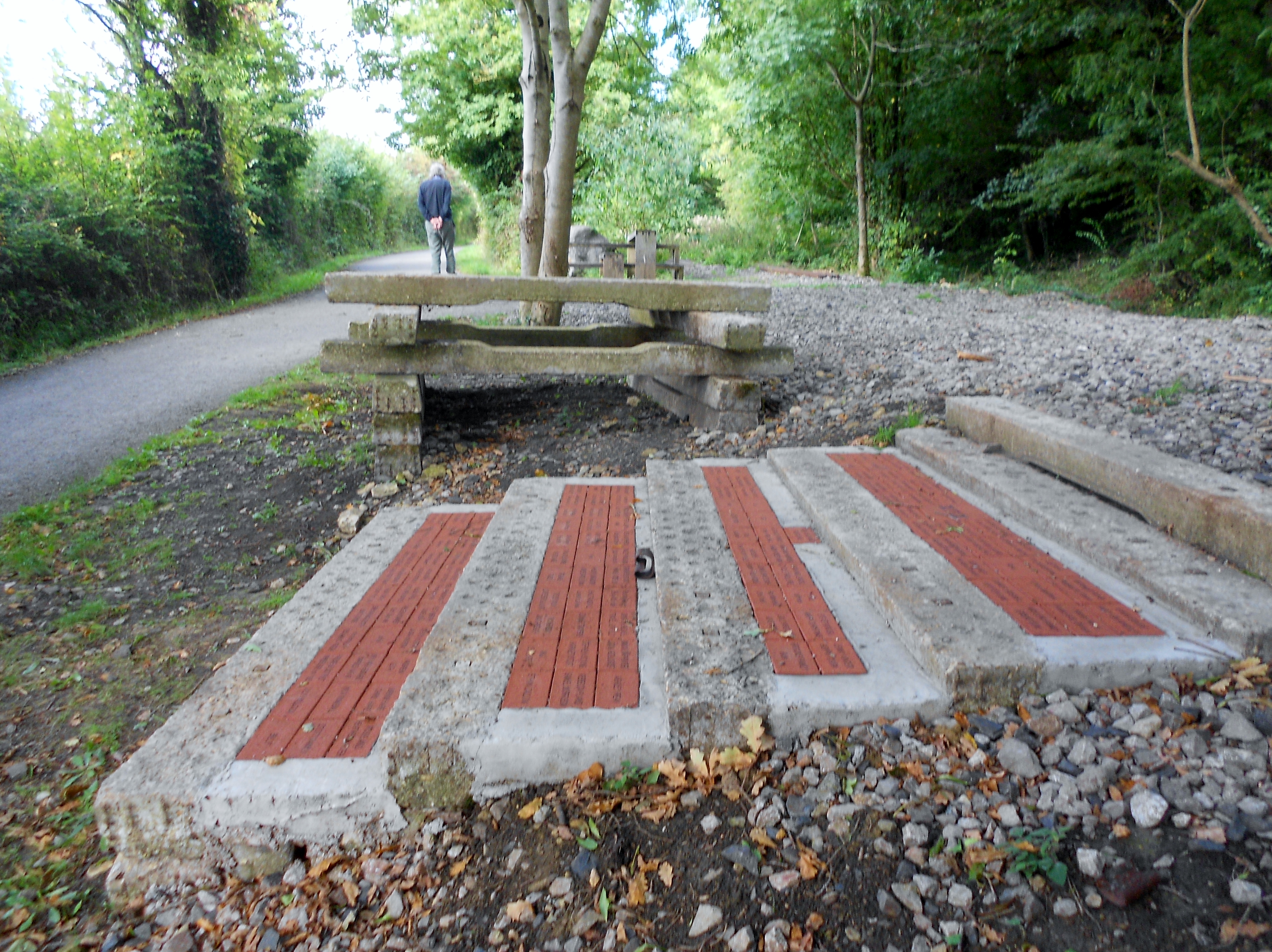
https://woolfplaquefrome.wordpress.com/

It’s not easy to build new active travel paths. Route choice, designs, plans, landowners, barriers (bridges, rivers, roads, canals), the need for ecological, topographical and physical surveys, public consultations, opposition and discussion from the myriad of user groups (Ramblers, railway restoration groups, Trails Trust, Wildlife Trust, etc), rights of way changes, flood risk assessments, badgers, bats, noise, planning permission, insurance, tools, storage space, and general lack of funding are just a few of the problems we regularly have to deal with. No wonder we talk about this as a long-term project!
At least this year, there is some tangible progress to report on the much-anticipated Phase 2 northern link into Frome. After many years of patient negotiations with various parts of Network Rail (NR), we have been able to open up and fence off a small but key piece of land along what was the old GWR branch line to Radstock. This saw brilliant efforts from our volunteers as they first hacked their way through 50 years of undergrowth and vegetation; removed the final ten pairs of old rails, sleepers and iron works (each rail weighing about 1 ton) and erecting about 200m of weld mesh fence under Network Rail supervision. This development has kick started the whole Phase 2 route and we now look for a completion date this side of Christmas. Our volunteers and contractors have been making huge progress on this technically difficult section and it is in no small part down to our volunteer support that this has been made possible.
To add to the excitement we now also have permission to fence off another 180m of adjoining land, which will complete the link to Elliots Lane. In total Phase 2 will add another 1.3 km of useable path to the Colliers Way and will eventually become an important gateway to the much anticipated 70 mile Somerset Circle. Obviously we are quite excited by the prospect of opening a new section of path after so many years of grindingly slow progress.
More progress on the ground on Phase 3 should see another 450m of path surfaced along the river at Whatcombe by the end of the summer. We have committed £30,000 to this and will again be working with Connor Construction, who with Aggregate Industries and Mrs Yeoman’s team are helping us to complete the work.
With the help of Somerset Council and Mendip District Council we have applied to Sustrans for development funding from the DFT transport fund, which will enable the next stretch to Cooper Hall and beyond. As always we say thank you to all involved.
Phase 4 is now the last part of our missing links and is only a mere 1.3km long. However, this is technically the most expensive section, as it will run largely along the existing Mendip Rail mineral line
from Whatley. We have conducted a detailed survey of this whole section, with NR staff and a newly revised workbook of our plans has been submitted to NR – we thank John Grimshaw and Greenways for their help in this endeavor. Volunteers also installed a new gate and planted 400 saplings at the Coalash Lane site, where we already have a short connecting section of completed path. More progress indeed!
The main fund raising event this year was the Ceilidh, which raised almost £3,000. We also received £800 from the sale of scrap iron works. We also had a very successful day at the Independent Market and raised more funds from our collecting tins and stall. The Frome Community Bike Project, which now has CIC status and successfully raised £30,000 start up capital, will donate any excess funds to Frome’s Missing Links.
Frome’s Missing Link volunteers have also been helping out with various elements of the proposed Somerset Circle, which will join up disused railway lines such as the Strawberry Line and could eventually form a 76 mile circuit of traffic free routes across Somerset. Already about 2km of path has been newly created between Shepton Mallet and Wells and our volunteers played a big part in making this happen. The Frome section will form the link from the Somerset Circle to the rest of the National Cycle Network to the east.
We have had a lot of support from staff and councillors at Mendip District Council (MDC) in the last few years. MDC is now defunct and subsumed into the new Somerset Council, but we did receive a parting gift of three penny farthing bike racks, which we will place along our path in due course.
Finally, thank you to our trustees and key volunteers who have all made massive efforts this year. Sometimes it feels like a full time job rather than a useful hobby but the rewards are obvious and the enthusiasm from the general public drives us on. As I have said before, this remains a long-term project, one step forward, two back, two more forward with an unexpected twist or two along the way – a bit like ceilidh dancing perhaps. The big difference is that we should all be able to walk, dance, ride or skip along some new bits of path this year. I know I intend to do just that.
Frome’s Missing Links Ecology Group Report: October 2022
Current work at Great Elm
The Ecology Group is maintaining the hedgerows, ditches and mown glades in this area, in accordance with the principles of the Habitat Management Plan. As part of the Greenways programme, a hedge was laid at the top of the ramp onto the Colliers Way, at the stone marked “Winston”. The Ecology Group intends to extend this hedge this winter and volunteers are welcome to help.
The group are now looking into sowing wildflowers at Great Elm. The management plan suggests that cutting grass and spreading the cuttings from flower rich to non-flower rich areas would be adequate, but this has not proved the case, as the seed bank has been too low. Local ecologist Sue Everett supports the need for sowing and her advice on what is right for the area can be sought. Particularly valuable seed is yellow rattle which is semi-parasite on grass.
Progress at Spring Garden / Whatcombe Fields
The diagram shows how the ecology plan is developing at the Whatcombe Fields end of the path, near Spring Gardens. Some initial hedge-laying in this area, with some labour contributed by Duke Of Edinburgh Award Scheme students from Frome College in 2019, is now becoming established. With structures, such as fences, gates and cattle grids added by the Friday Club over the last few years , the area combines ecology with the creation of the path.
This hedge has received must less vandalismthan other areas, as the path was not initially open to the public. The plants were bigger and more established when access to the public started.
Future planting options
Another area where there is the potential for more planting of trees and shrubs would be at the Coalash Lane Bridge, where there is space alongside the path. If planting could begin here in the near future, the plants would be able to mature and become robust before the public had full access.
Progression of the path
As work progresses on the path in Phase 2 (Great Elm to Hapsford House), there is an opportunity for detailed consideration of the area’s ecology to identify existing trees, scrubs and grass areas that can be saved. At the same time, it would be valuable to asses what space is available for new planting to create varied habitats.
An ecology survey is now scheduled for early October, by Liam Russell Ecology, to document the important ecology of the area where the path is to go in the Elliot’s Lane area.
3rd January 2022
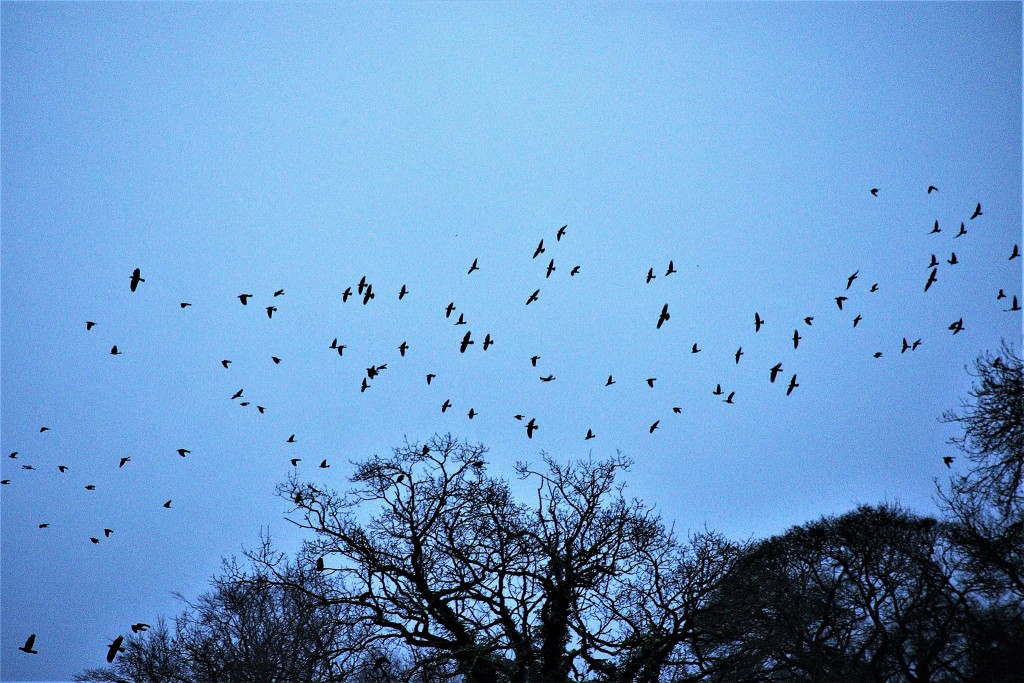
Imagine our shock and distress in view of our magical experience watching and listening to the Rooks and Jackdaws on New Year’s Day to read this report in The Guardian newspaper today which opens:
“Some wild birds can be killed in order to protect game birds bred for shooting in England, the government has ruled, in an update to guidance on general shooting licences. General licences give broad permissions to shoot certain species of wild birds to protect livestock, aid conservation, and preserve health and public safety.” https://www.theguardian.com/environment/2022/jan/03/law-change-allows-wild-birds-killed-protect-game-birds-england
“Some wild birds..” include Rooks and Jackdaws. We are struggling to think in what circumstances either bird is a threat to “health and public safety” or indeed how preserving imported game birds while killing native wild birds help to “aid conservation”. Rooks eat wire worms which destroy the roots of many food crops, Jackdaws are scavengers, cleaning up the countryside. In what way they are a threat to game birds is hard to understand.
Frome’s Missing Links
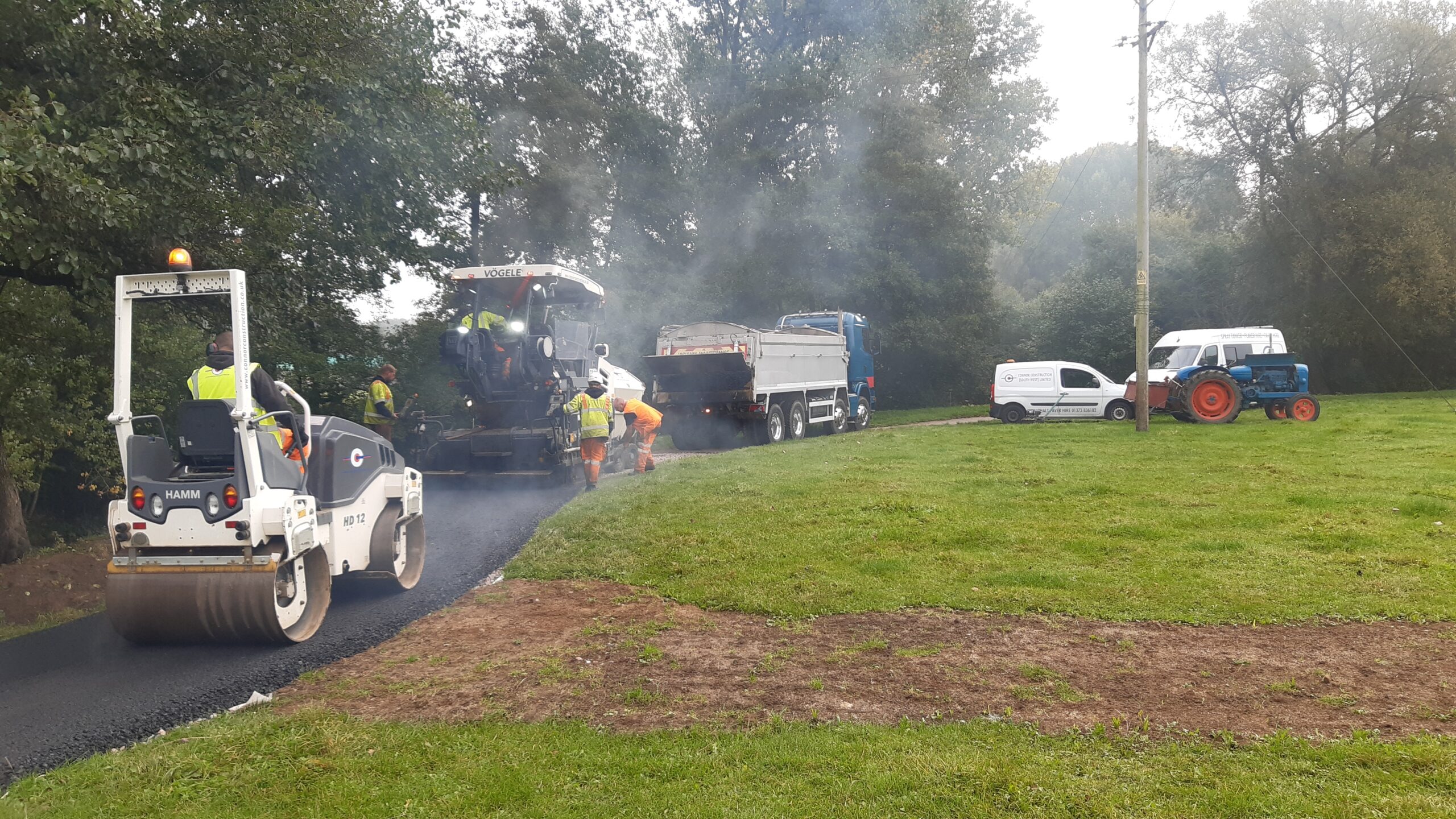
Frome’s Missing Links volunteers and supporters are celebrating another small milestone towards the completion of a traffic free route between the town and the end of the Colliers Way path at Great Elm.
Anyone who has ridden or walked along the lovely riverside path towards Whatcombe fields has probably asked, “Why does this end so suddenly at Low Water?” No doubt you’ve always wondered if anyone would ever get around to extending this. Well, it’s been a while, but at long last some progress has been made. Thanks to the work of volunteers and generous donations by local businesses the tarmac path now extends a further 150m to a cattle grid, with further extension work to come.
Chair of Frome’s Missing Links, Richard Ackroyd explains, “We are extremely grateful for the help and assistance from some key people and organisations. First, thank you to the landowners, Katherine and Ian for allowing this section of the path to cross their land. Without them the whole project would have been impossible. A massive callout and heartfelt thanks go to Mrs Angela Yeoman and her team, who provided expert people power and specialist equipment. Aggregate Industries provided over 100 tonnes of materials free of charge, which is amazing. Big thanks should also go to hauliers RH & AJ Bateman Ltd who provided free transport of materials to the site. We are also indebted to Connor Construction Ltd for laying almost 40 tonnes of tarmac, again completely free of charge. All of these people and organisations were extremely professional and worked alongside our volunteers to engineer a high quality outcome that will be enjoyed by young and old for many years to come.”
Building a path is a complex process involving many stages. After initial survey work, drawings, consultation and planning permission was gained, volunteers had to first construct a culvert crossing, install a cattle grid (reclaimed from the Orchardleigh estate) install gates, fences and dig cross drainage channels before actual path construction could take place.
Laying the path began with digging a 150mm deep trench into the ground and this was then covered by a geo-fabric layer, which in turn was covered by a 150mm deep layer of drystone aggregate to form a sub-base. This was then topped off with a 60mm thick asphalt layer, which was then rolled flat to make a hardwearing surface suitable for all forms of active travel.
“We are probably a couple of years behind where we expected to be at this stage,” continued Richard. “Our hope was to have this section completed last year, but with the epidemic we had to halt activities and postpone works twice until it was safe to continue. It was also important to have dry weather, which luckily we managed to get this week.”
Frome’s Missing Links have also been working closely with Sustrans, Greener Greenways and Cycle Routes Ltd, Frome Town Council and Mendip District Council, who each in different ways have contributed expertise and funding towards the project.
Frome’s Missing Links is campaigning to create a safe, traffic-free route from the centre of town to the Colliers Way multi-user path. The Colliers Way connects Great Elm to Radstock on a traffic-free route, maintained by Sustrans. Once connected with the Colliers Way at Great Elm, people in Frome will have a safe, traffic-free and family-friendly route to Mells, Kilmersdon and Radstock, and a connection onwards on quiet lanes and paths to Bath. Frome’s Missing Links is also campaigning to create multi-user paths to the south of Frome towards Longleat.
Richard Ackroyd, Chair Frome’s Missing Links
*********************************************************************
Legally Protected Species of Conservation Concern sighted along Colliers Way Greener Greenways: Otter, Badger, Grass Snake, Slow Worm.
Thirty eight per cent of the bird species recorded along this stretch have an Amber or Red designation. BTO Red and Amber List
4th February 2020
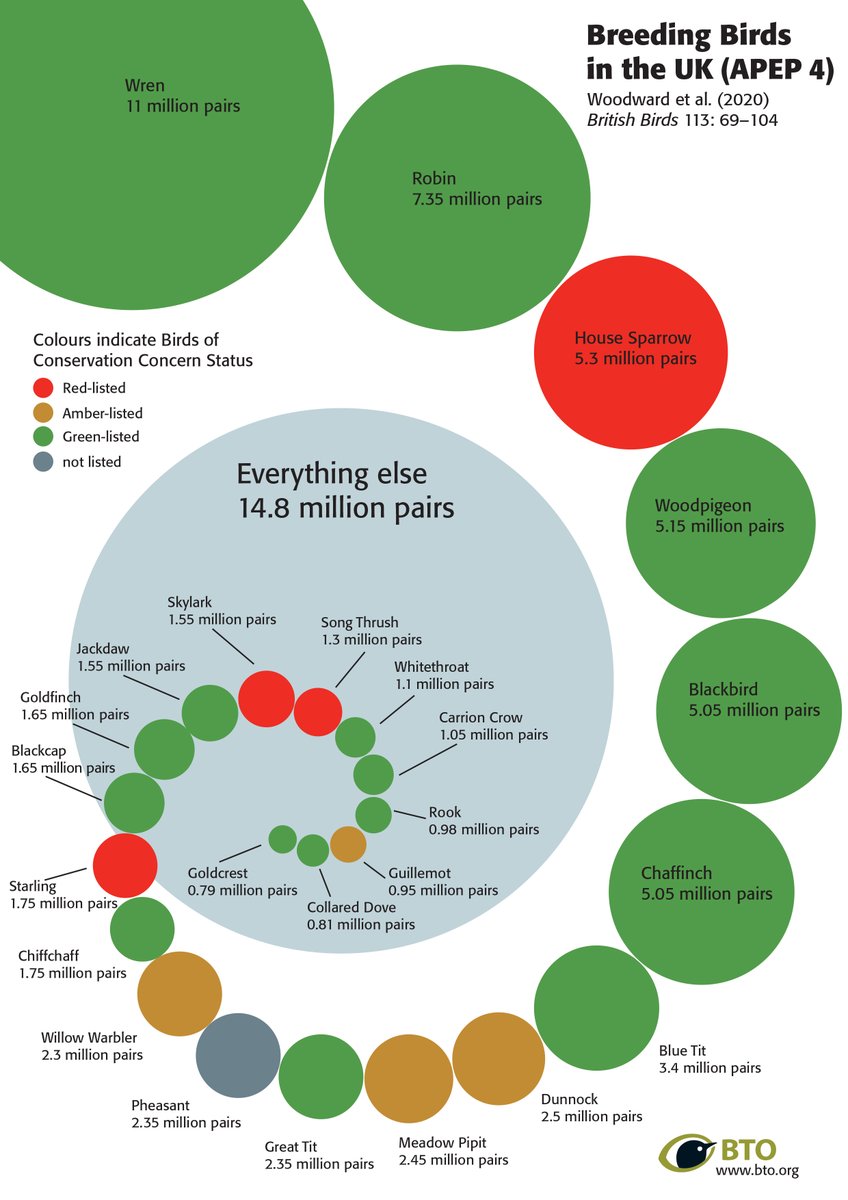
6th March 2019
Quotation from Prince Harry’s speech addressing the audience attending the WE Charity Event at the SSE Arena in Wembley, London :
“Every forest, every river, every ocean, every coastline, every insect, every wild animal. Every blade of grass, every ray of sun and every rain drop is crucial to our survival.”
14th January 2019
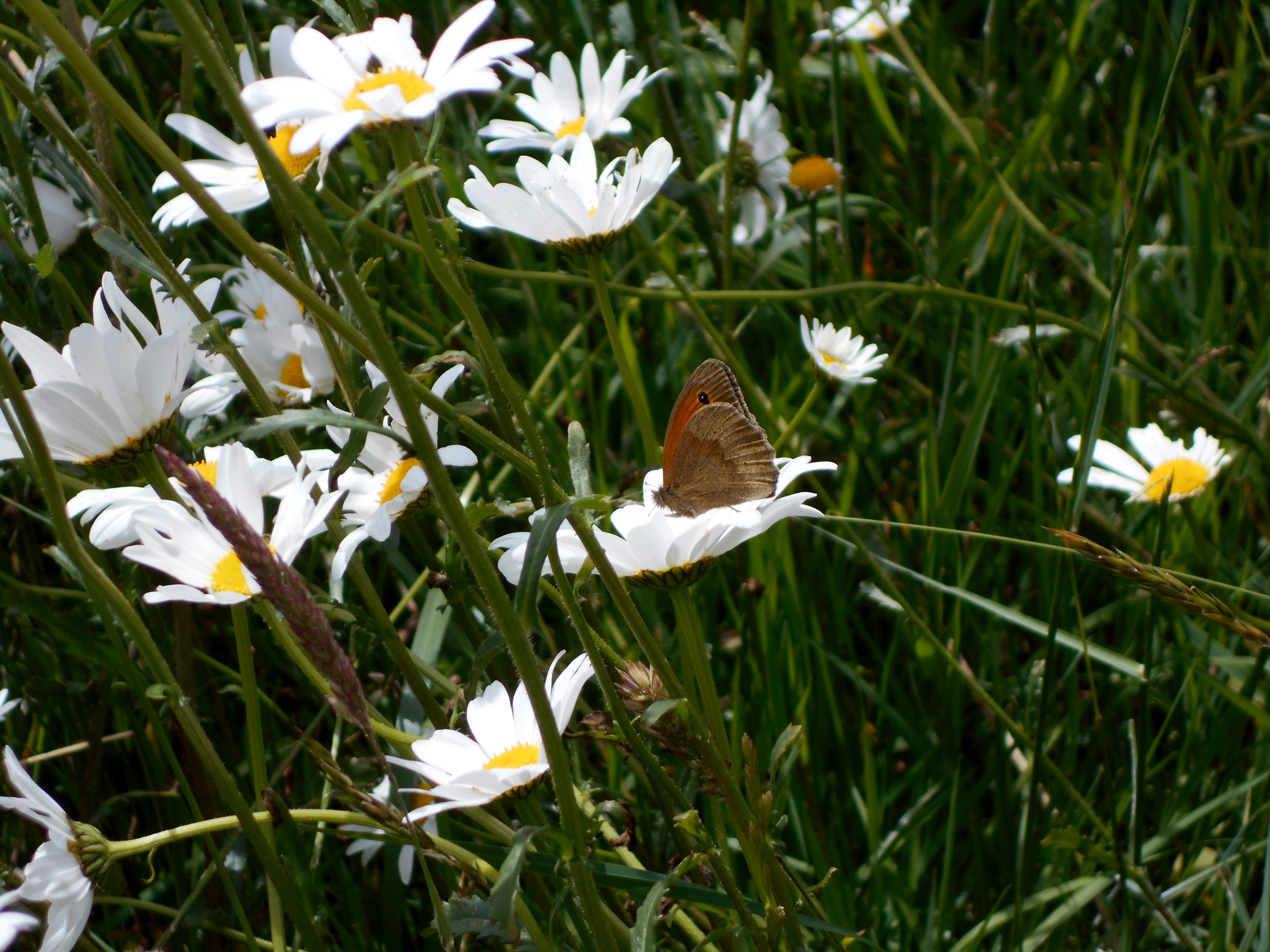
An article in The Guardian newspaper outlines the research, published in the journal Nature Ecology and Evolution, which found allotments and gardens often had 10 times more bees than parks, cemeteries and urban nature reserves. Katherine Baldock at the University of Bristol, who led the research said nature reserves were important for other wildlife but were often less suitable for pollinators, being dominated by trees rather than meadows.
The scientists also identified the flowers most visited by bees, hoverflies and other pollinators. Native favourites included brambles, buttercups, dandelions, creeping thistle, common hogweed and ox-eye daisies. “People tend to think of these as weeds, but they are really important for pollinators,”
Thankfully the stretch of Collier Way which we survey has long stretches of flower filled grassland, rough grassy embankments and large areas where brambles, buttercups, dandelions, creeping thistle, common hogweed and ox-eye daisies are prolific, as are woolly thistles and some spear thistles whose flowers are usually almost obscured by a smothering of bees.
5th October 2018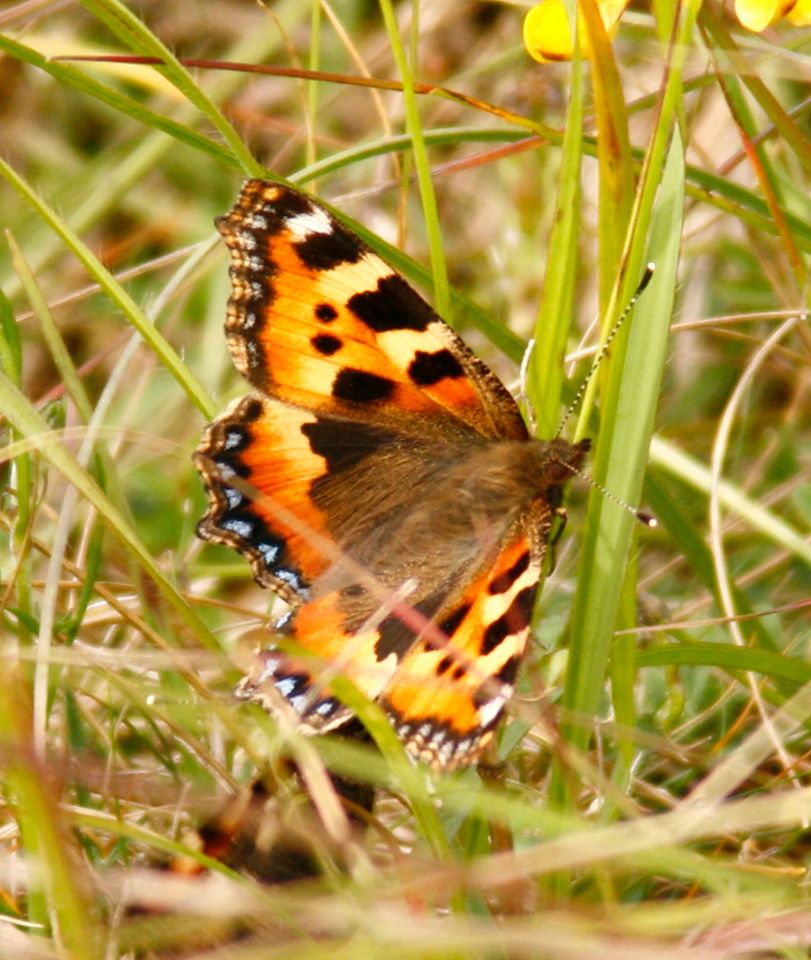
Results of the Big Butterfly Count 2018 show mixed fortunes for many butterflies. The Small Tortoiseshell, which has lost three-quarters of its UK population since the 1970s, suffered its worst big butterfly count on record, worse even than in the wash-out summer of 2012. Small Tortoiseshell numbers were down by a third compared to the same period in 2017 across the UK as a whole, The Red Admirals which over-wintered here were caught out by the sudden cold snap early in the year and their numbers fell by 73% from the bumper year in 2017. Big Butterfly Count
See below: 2017 BirdTrends report
OF RAPID DECLINE – The British Trust for Ornithology has just published their latest Bird Trend Survey which makes sobering reading (19th January 2018) Bird Trend Survey
It highlights the rapid and continuing decline of our Greenfinch population by 59% in just ten years. In the Long Term Trends: England section, the birds in Rapid Decline include Marsh Tit, Whitethroat, Spotted Flycatcher, Song Thrush, Linnet, Nightingale, Lapwing, Yellowhammer, Corn Bunting and Little Owl all of which are regular visiting or breeding species along the Great Elm to Mells Road Greener Greenways section of Route 24.
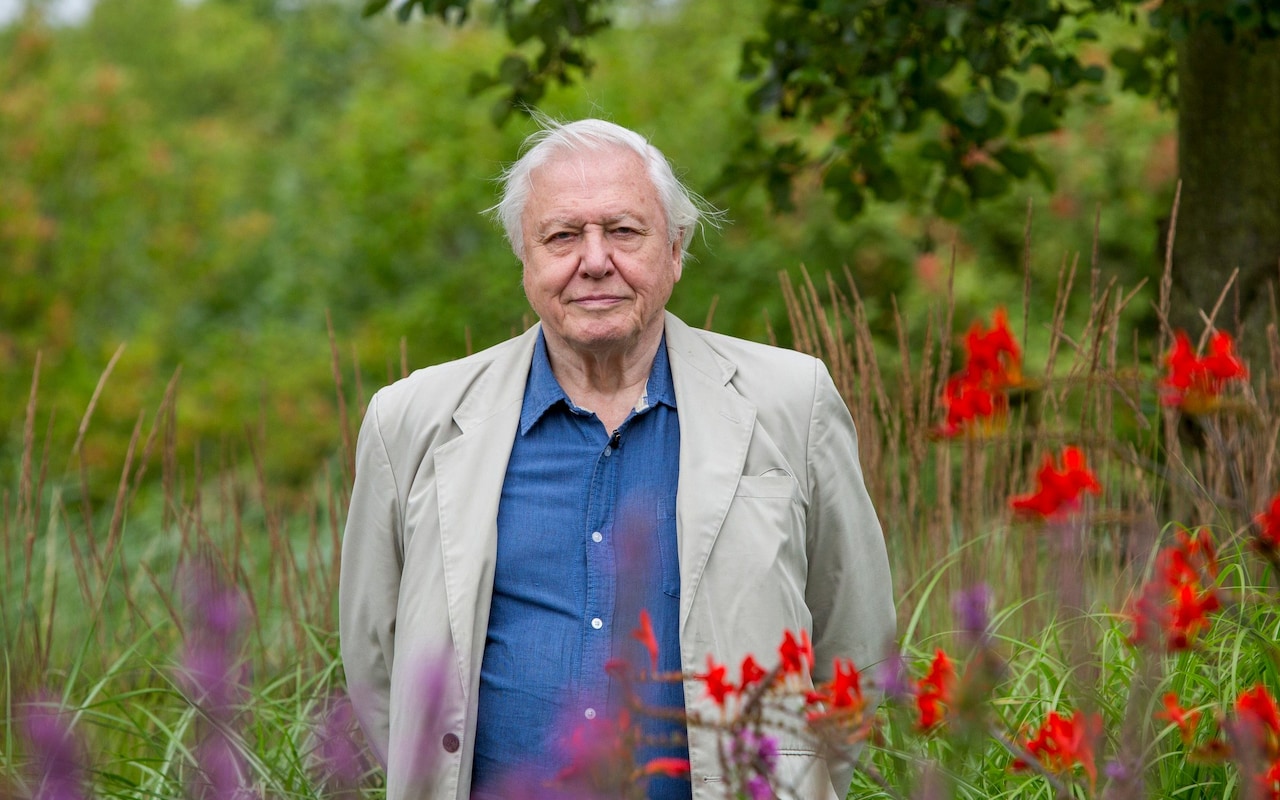 Sir David Attenborough : Helen Atkinson
Sir David Attenborough : Helen Atkinson
More than three-quarters of the UK’s butterflies have declined in the last 40 years, according to the charity Butterfly Conservation and last year (2016) saw some saw the worst falls for butterfly numbers since the Big Butterfly Count began in 2010.
The Small Tortoiseshell saw a 47 per cent drop in numbers while Peacock butterflies slumped to their second worst year on record, with a drop of 42 per cent on 2015 numbers. Sightings of Comma butterflies fell by 46% while Gatekeeper populations were down 40 per cent and Small Coppers dropped 30 per cent compared to 2015 according to Sir David Attenborough, President of the Charity. He adds “Worryingly, we are now seeing the fortunes of some of our once common butterflies mirror those of our rarest species and they too are now also suffering significant declines.” See article in The Telegraph
This situation has been further highlighted by a recent survey (18th October 2017) of nature reserves in Germany which states that three-quarters of flying insects in these reserved have vanished in the past 25 years. See article in Thae Guardian
Thankfully, 2017 has proved a wonderful year for butterflies (and bees) along the Way, both in numbers and diversity of species, which reinforces the crucial importance of habitats like the Sustrans cycle paths that provide ample, undisturbed larval and nectar food plants for a great number of butterfly species.
The following extracts are from The Butterfly Handbook by English Nature and refer to highways but apply equally to cycle routes. As long stretches of Route 24 abut onto farmland, the points made are particularly relevant and indicate that the cycle path constitutes an ‘optimum site’.
“The optimum sites for butterflies have a diversity of habitat to cope with varying climatic conditions, so that in hot dry summers butterflies can move to cooler areas with thicker soil less prone to drought, and in cool wet summers butterflies can move onto areas with thin dry soils that heat up quickly in the sun; a varied topography (as provided in road cuttings [and cycle paths] and on [disused railway] embankments) is especially important with anticipated climate change.
The local and landscape scales are probably the most important for butterflies. Habitat links such as wildlife corridors work especially well when the surrounding countryside is poor in habitat quality e.g.in intensively farmed land. In addition to providing connectivity between sites, some habitat links can function as breeding areas and act as source patches, which provide surplus individuals to unoccupied patches of lower habitat quality in the nearby area.
Habitat requirements include:
- Larval foodplants in correct position.
- Short or long sward
- Bare ground
- Shelter
- Presence of ants
- Nectar sources
The following is a list of the larval food plants used by the butterflies recorded on Colliers Way; the cycle path also has ample short and long sward, bare ground, shelter and nectar sources. No records have been made of ants. Data from The Millennium Atlas of Butterflies in Britain and Ireland (Asher, 2001).
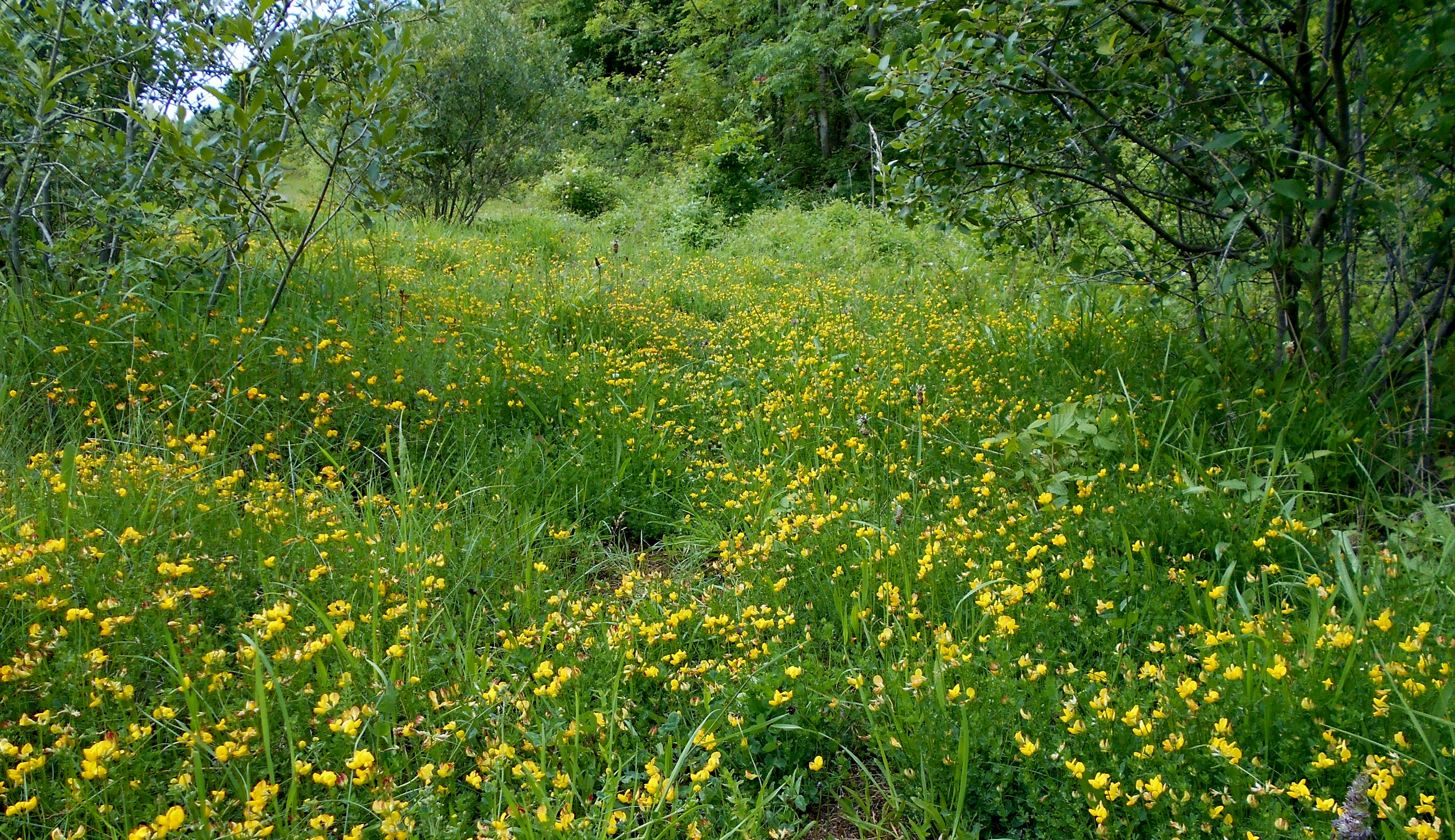 A mass of flowering Bird’s Foot Trefoil along the Way
A mass of flowering Bird’s Foot Trefoil along the Way
Larval Food Plants
- Birds Foot Trefoil: Wood White, Common Blue
- Common Dog Violet: Silver-Washed Fritillary
- Common Nettle: Comma, Peacock, Red Admiral, Small Tortoiseshell
- Meadow Grasses: Gatekeeper, Meadow Brown, Ringlet, Small Heath
- Tufted Vetch: Wood White
- Cock’s foot (grass) Meadow Brown, Ringlet, Speckled Wood, Large Skipper
- Fescues (grasses) Gatekeeper, Meadow Brown, Small Heath
- Ivy Holly Blue
- Yorkshire Fog (grasses): Marbled White, Speckled Wood, Small Skipper
- Thistles: Painted Lady
- Clovers (various): Clouded Yellow
- Charlock: Green veined White [Second: Orange-tip, Small White]
- Common Sorrel: Small Copper
- Common Restharrow: Common Blue
- Dove’s Foot Cranesbill: Brown Argus
- Holly: Holly Blue
- Hop: [Secondary: Comma, Peacock, Red Admiral]
There are no recordings of crucifers (larval food plant of Large White and Small White caterpillars) or Alder Buckthorn (larval food plant of the Brimstone caterpillar) all three very common butterflies along the Way. This of course does not mean that they do not exist there, merely that they have not been spotted, however, there is a field of kale abutting the path.
The following is a list of the Primary and Secondary Nectar food plants used by the Butterflies recorded along Colliers Way:
Nectar Food Plants
- Bird’s Foot Trefoil : Wood White, Common Blue, Small Blue, Painted Lady, Small White, Large Skipper, Small Skipper
- Bramble : Silver-washed Fritillary, Comma, Gatekeeper, Holly Blue, Meadow Brown, Orange-tip, Red Admiral, Large Skipper, Speckled Wood, Small Heath, Ringlet, Small Heath
- Buttercups : Wood White, Green-veined White, Holly Blue, Meadow Brown, Small Heath, Small Copper
- Cowslip : Brimstone
- Daisy : Small Copper, Small White
- Dandelion : Brimstone, Clouded Yellow, Orange-tip, Small White, Peacock, Small Copper, Speckled Wood, Large Skipper, Small Tortoiseshell, Small White
- Field Scabious : Small Tortoiseshall, Large White, Large Skipper
- Thistles : Brimstone, Comma, Peacock, Large White, Marbled White, Small White, Painted Lady, Clouded Yellow, Common Blue, Green-veined White, Ringlet, Red Admiral, Small Copper, Small Skipper, Meadow Brown, Small Tortoiseshell, Gatekeeper
- Hawkweeds : Orange Tip, Painted Lady, Peacock, Small Copper, Small White, Small Tortoiseshell
- Honeydew/Sap : Speckled Wood, Holly Blue, Peacock, Red Admiral
- Ragwort : Brown Argus, Clouded Yellow, Common Blue, Gatekeeper, Large White, Meadow Brown, Green-veined White, Peacock, Painted Lady, Ringlet, Silver-washed Fritillary, Small Copper, Small Heath, Small Tortoiseshell, Small White, Speckled Wood.
- Red Campion : Brimstone, Orange tip, Small White, Green-veined White
- Red Clover : Wood White, Painted Lady, Small Copper, Small Skipper, Marbled White, Small White
- Teasel : Large White, Meadow Brown, Peacock, Red Admiral
- Vetches (Vicia spp.) : Wood White, Brimstone, Orange-tip, Clouded Yellow, Common Blue, Small Blue, Small Skipper, Green-veined White
- White Clover : Brown Argus, Common Blue, Marbled White
- Yarrow : Peacock, Marbled White, Meadow Brown, Small Copper, Small Heath
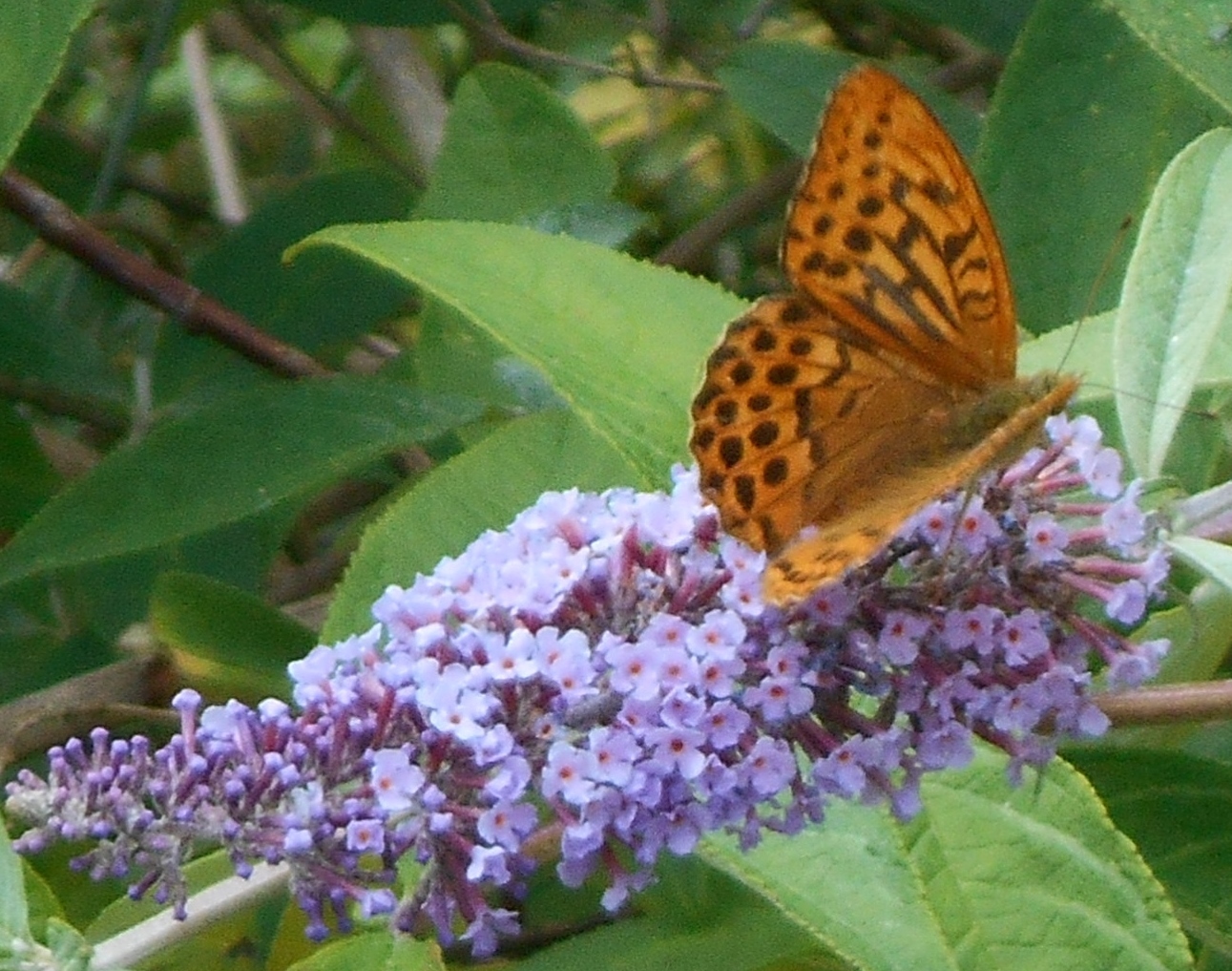 Silver-washed Fritillary
Silver-washed Fritillary
Flight times for UK Butterflies. Much of the information contained in these tables has been derived from Emmet (1990), Asher (2001), Riley (2007), Thomas & Lewington (2010),
Reptile Survey Sustrans and FML volunteers have been conducting a reptile survey on Collier’s Way as part of the Greener Greenways project . Findings : strong breeding populations of Slow Worms, Common Lizards and Grass Snakes, an average of 10 reptiles on each check plus a few Shrews, Toads and Voles.
III : B I R D Survey 2016
We must count ourselves extraordinarily fortunate that we are able to enjoy a considerable variety of birdlife whilst walking Colliers Way as so many of the birds sighted along the cycle path have shown catastrophic levels of decline throughout England. “What’s good for birds is also good for butterflies” and we have certainly seen a bumper year for butterflies along the Way.
However, the newly published Breeding Bird Survey 2016 Breeding Bird Survey 2016 makes sobering reading. Of particular concern to Colliers Way are the paragraphs highlighting the decline in woodland birds, particularly Nightingale, Garden Warbler and Spotted Flycatcher which feed and possibly breed among the trees and undergrowth along the cycle path.
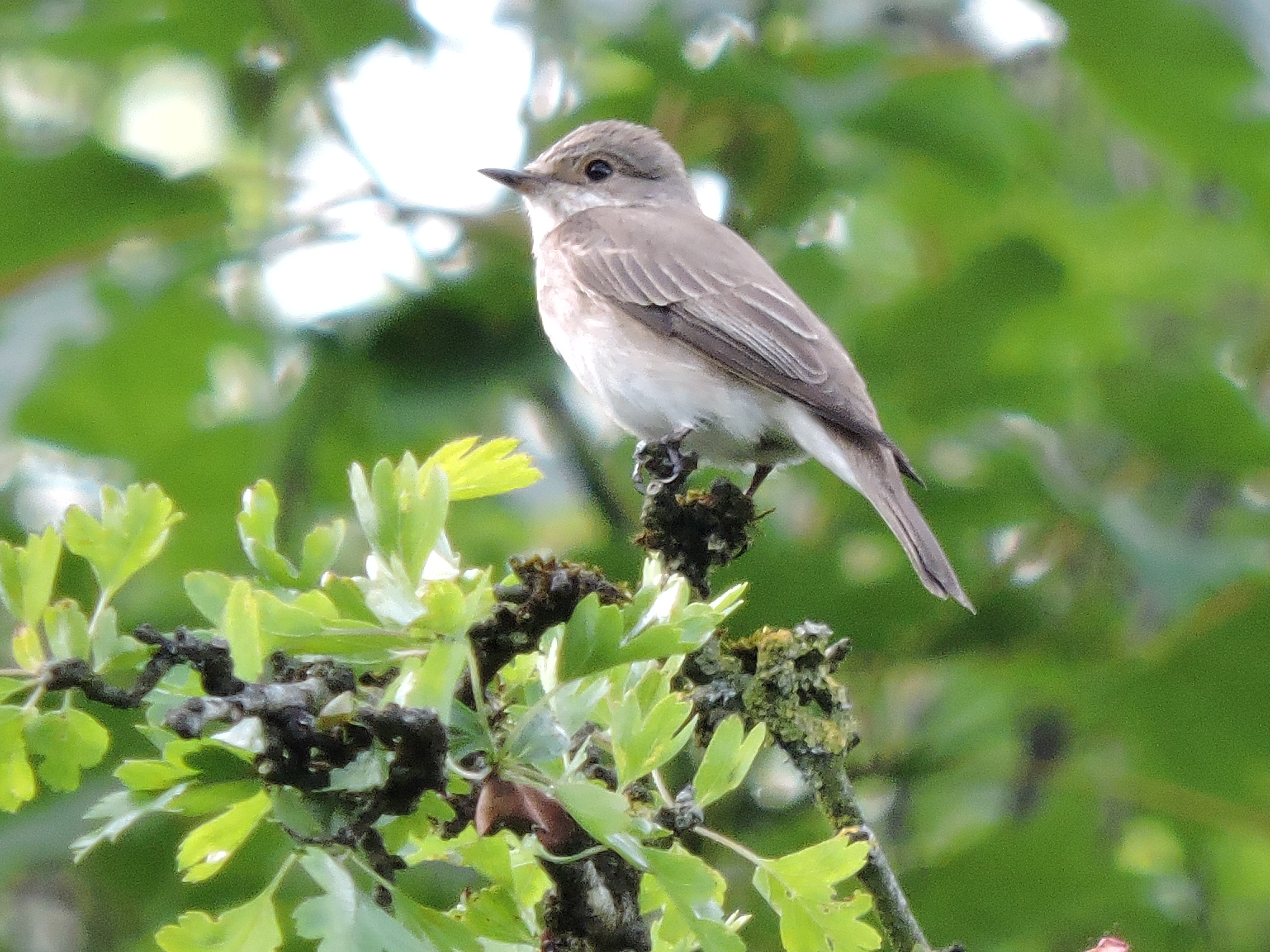 Spotted Flycatcher – Summer – John Hansford
Spotted Flycatcher – Summer – John Hansford
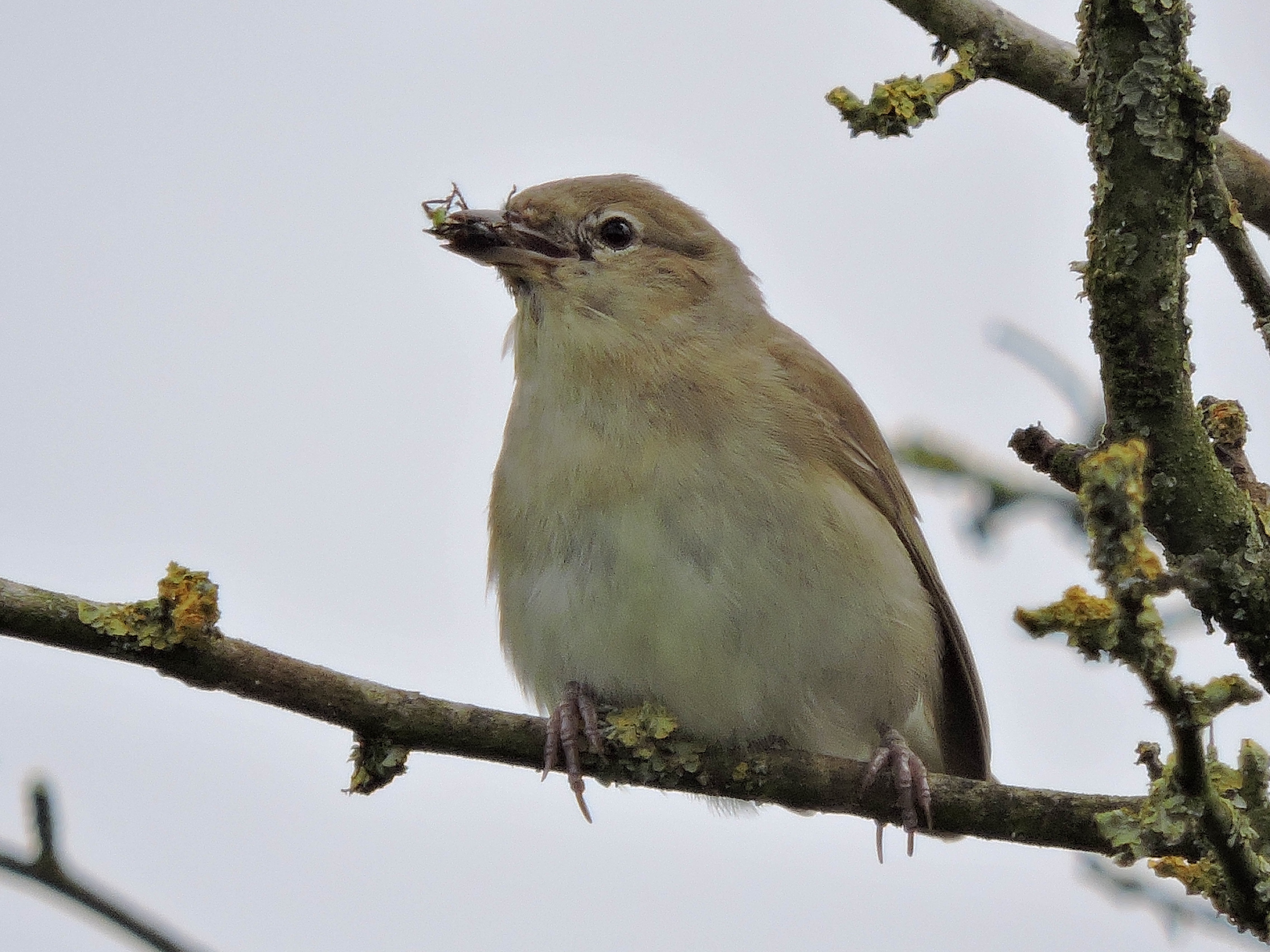
BIRDING in the Mells area
John Hansford (writing in The Bittern Newsletter of the Somerset Ornithological Society) reveals another interesting birdwatching area:
Mells is situated in the east of the county, approximately three miles to the west of Frome. The local habitat contains a fine mixture of open farmland, hedgerows and woodland with the Mells Stream flowing to the south of the village.
Mid- April to mid-May is a great time to take a walk along the cycle path (Colliers Way route 24), starting at Conduit Bridge and walking in either direction. The more energetic may desire of parking near the post office in Mells and walking up the lane, approaching Mells Down on foot. The fields and hedgerows tend to hold good numbers of Yellowhammers and Common Whitethroats.
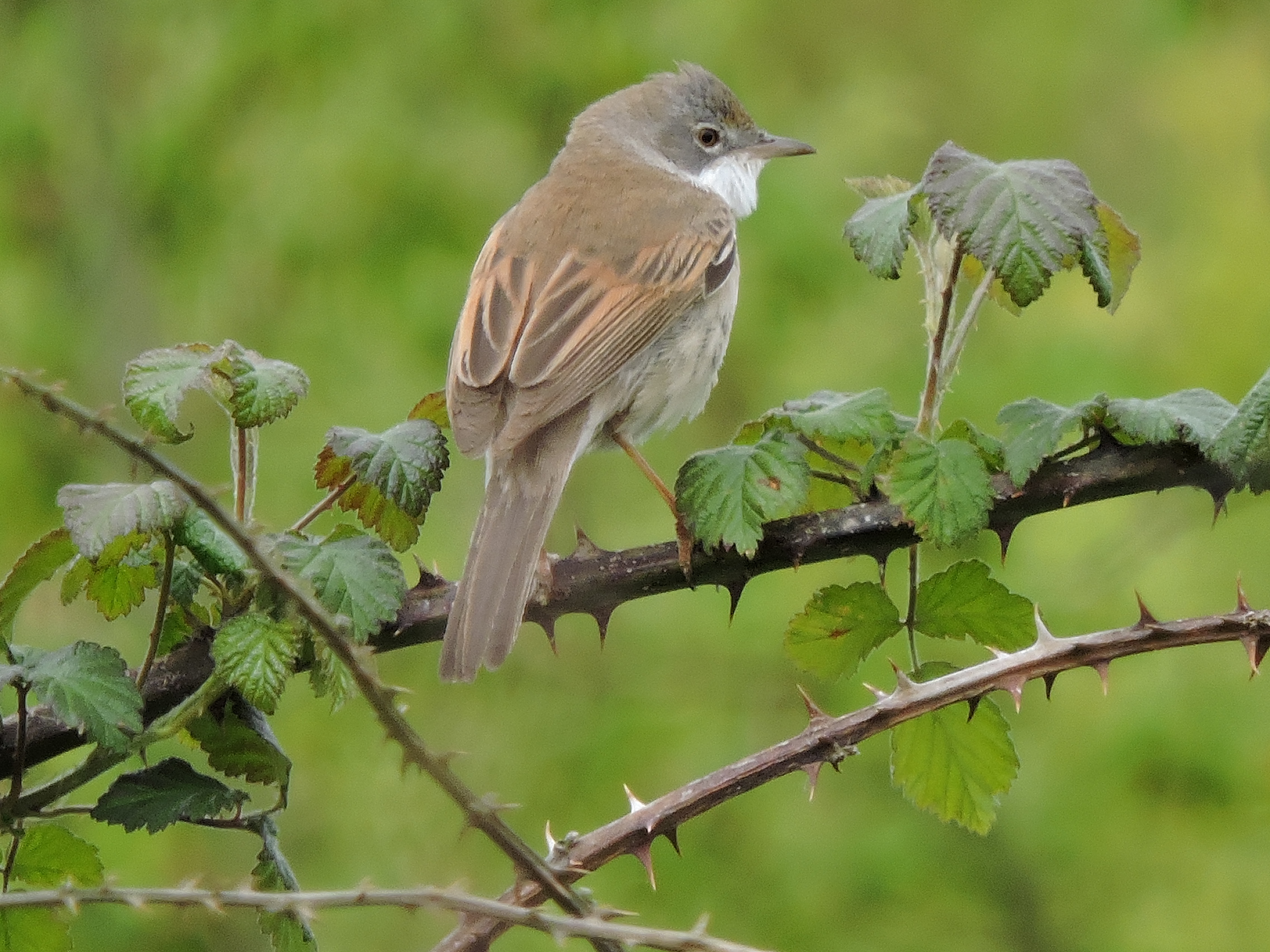 Whitethroat – John Hansford
Whitethroat – John Hansford
A few pairs of Lapwings not only breed here but over the wider area in this part of the county. Bullfinches, Skylarks, Linnets, Garden Warblers and Blackcaps aplenty can also be found. Red-legged Partridges are never too far away. Stock Doves and Jays should also be encountered. Nightingales and Lesser Whitethroats are also a strong possibility and were present last year. The calls of Chiffchaffs and Willow Warblers will add to the flavour of spring.
Marsh Tits are normally found to the east of Conduit Bridge. Song Thrushes and Mistle Thrushes also breed here. All five owl species have been recorded with Barn, Little and Tawny Owls seen regularly. With suitable habitat in the area it is possible that Long-eared Owl might breed; any Short-eared Owls will be winter visitors. Look skywards – any raptor species is possible from Red Kites to Hobbies, Peregrines and Sparrowhawks. Ravens are never too far away.
Parking is available near Conduit Bridge and additional sensible parking can be done on roadside verges to the south of the Bridge. Mells post office has an excellent café attached to it, serving a splendid range of food for those that may wish to make a day of it.
Article in The Bittern, Newsletter of the Somerset Ornithological Society Issue: 5th March 2013
******************************************
IV : A S H TREES (Fraxinus excelsior)
Ash trees make the perfect habitat for a number of different species of wildlife. The airy canopy and early leaf fall allow sunlight to reach the woodland floor, providing optimum conditions for wildflowers such as dog violet, wild garlic and dogs mercury, and consequently insects such as the rare and threatened high brown fritillary butterfly.
Bullfinches eat the winged seeds and woodpeckers, owls, redstarts and nuthatches* use the trees for nesting. Because trees are so long lived, they support deadwood specialists such as the lesser stag beetle. Often ash is accompanied by a hazel understory, providing the perfect conditions for dormice.**
Ash bark is often covered with lichens and mosses. The leaves are an important food plant for the caterpillars of many species of moth, including the coronet, brick, centre-barred sallow and privet hawk-moth. Woodland Trust
[Regretfully quite a few of the ash trees along the Way have succumbed to ash dieback disease but according to the Forestry Commission Fera map, the trees in the 10 km square around the Mells area are already infected (2016) so the trees here were unlikely to remain immune.]
*Bullfinches, woodpeckers, owls and nuthatches have all been regularly sighted along Colliers Way but no redstarts yet.
** although dormice haven’t been sighted along Colliers Way, there is certainly an ash grove with many hazel trees beneath so the conditions are there.
V : N I G H T I N G A L E S
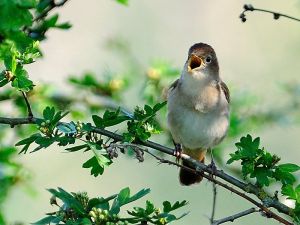 Nightingale – Kev Chapman
Nightingale – Kev Chapman
[Nightingales heard on Colliers Way coming from a dense thicket of bramble, backing onto a deep hedge, surrounded by shrubs almost covering the path, quite close to the pond : 23.5.2017 and 1.6. 2017]
Nightingales are primarily insectivores, preying on insects such as beetles, ants, worms, and spiders found on the ground. They also eat insect larvae.
Nightingales have declined by 90% over the last 50 year writes Chris Rose in The Ecologist in May 2015.
Nightingale homes have been cleared away, thickets tided up or grubbed out, and Britain’s biggest single population of nightingales at Lodge Hill in Kent, is even under threat from housing development. We have all heard of the ‘canary in the coalmine’ and Rachel Carson’s Silent Spring. But in the case of the British nightingale, we have both rolled into one. It is the signature voice of spring and yet it is falling silent, vanishing from one copse, thicket and wood after another, year on year.
The Ecologist is based in Oxford – which for a piece about the nightingale, is a shame, as they have all but disappeared not just from the city, but from the whole county of Oxfordshire, as they have over so much of England and even from their former corners of Wales.
In his book The Nightingale and Its Song and Other Familiar Songbirds, written in 1932, naturalist and film-maker Oliver Pike described the nightingale as “common in suitable places” in Oxfordshire and stated: “I have seen more nightingales close to the city of Oxford than in any other part of England.” That could not be said now. Indeed there are probably more environmental film-makers than nightingales around Oxford today.
In 1980 a survey by the British Trust for Ornithology (BTO) found 79 singing Nightingales in Oxfordshire: another survey in 1999 found just 17 and if nothing is done to change current trends, the Nightingale could be extinct in Britain within 20 or 30 years.
They calculate that it has already lost 43% of its former range, and has declined over 90% since the late 1960s. The latest estimate is that there are around 5,850 singing (only the males sing) nightingales in Britain, which is fewer than people named ‘Nightingale’ (around 10,000).
Nightingales have always been found mostly in the south of Britain but old studies (and perhaps the distribution of people named Nightingale) show they used to be found as far north as Cheshire, South Yorkshire and Derbyshire.
They were also quite common across much of the Marches, parts of Wales, the Midlands and into Somerset, Dorset and Gloucestershire, as well as the Home Counties and East Anglia. Now they are increasingly confined to SE England – and getting rarer even there.
In recent years, researchers at the magnificent Ancient Woodland of Bradfield Woods in Suffolk, uncovered one factor in the disappearance of nightingales: deer are literally eating their key habitat, low dense growth such as that created by coppicing. But by the time their studies were published in full, the birds themselves had gone.
Over the past two or three decades, Southern England has seen a massive explosion in the numbers of deer, especially the small introduced muntjac which escaped from Whipsnade Zoo. They are literally eating nightingales ‘out of house and home’, as well as eliminating many wildflowers such as orchids, primroses and bluebells.
That’s one undoubted cause, and the only solution is to shoot or otherwise control muntjac and roe deer, and for landowners and managers to fence their woods, which is expensive. There are proposals to re-introduce lynx into England which could help but they’d have to get very busy. Until then, eat wild venison to help nightingales in Britain.
With a warming climate you might expect nightingales to be spreading north as some other birds are but the reverse is true. They are retreating south. One reason maybe that in common with some other summer migrant visitors to Britain that winter in the African ‘humid forest zone’ near the equator (such as spotted flycatcher and turtle dove), the nightingale is not getting a ‘climate signal’ that spring is coming earlier in the Northern Hemisphere.
So these birds, unlike those wintering in North Africa, may still turn up at the ancestral time, only to find that key food items have gone. They could be ‘out of synch’. Their wintering places too are changing, with forest converted to intensive farmland.
Other possibilities are that pesticides such as neonicotinoids may play a role, or even that hitherto uninvestigated factors such as the parallel decline of the southern wood ant, which old nightingale catchers and keepers used to use as bait and food, might be involved. But that’s me speculating.
What is certain, is that nightingale homes have been cleared away, thickets tided up or grubbed out, and coppicing of woodland is far less widespread than it once was. Britain’s biggest single population of nightingales at Lodge Hill in Kent, is even under threat from housing development.
It’s also true that a host of insects from moths and butterflies to ants, are far rarer than they used to be. With government funded research into most of our native flora and fauna almost abandoned, we may never get to nail down all the causes until the nightingales are ‘in the coffins’.
There are some glimmers of hope. With help from Anglia Water last week the BTO published a guide for landowners on how to manage ‘scrub’ – thickets of blackthorn and hawthorn – to maximise its suitability for nightingales. Grafham Water near Peterborough is one place where Anglia Water has done this successfully: they deserve credit for it. If enough land mangers acted on this advice we might possibly turn the tide. The 3,500-acre re-wilding project at Knepp in West Sussex is another big success story.
Then there’s the lynx, deer fencing and venison burgers, and tackling climate change, and organic farming. They’d all help. Let’s not allow the nightingale to slip quietly into the night and never be heard again.
Chris Rose is a campaigns and communications consultant and former campaigner for WWF, Greenpeace and Friends of the Earth.
**************************************************